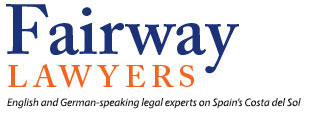QUESTION
I am an Irish citizen and in 1998 I bought an apartment in Torremolinos which I am now about to sell.
I am rather confused about the tax implications of the sale, since on the one hand I have read that capital gains made by non-residents are taxed at 18% (eighteen per cent), but the person who is dealing with the sale has told me that the purchaser has to retain 3% (three per cent) of the amount of the sale and pay it into the Spanish tax authorities.
I would like to know if the five per cent retention is compulsory and if this would exempt me from the obligation of the 18% (eighteen per cent) capital gains.
ANSWER
When a purchase-sale involving property takes place, this normally gives rise to a capital gain which is defined as the difference between the sale value now and the original acquisition value.
In this particular instance, as you are not tax resident in Spain, your capital gain is taxable at 18% (eighteen per cent), which means that the tax payable to the tax authorities would be 18% (eighteen per cent) of the difference in value between the transfer and acquisition values, provided that this difference results in a positive figure, i.e. that a capital gain has actually been made.
Spanish law states that when the vendor is non resident, the purchaser – whether or not he/she is resident – is obliged to withhold and pay into the Spanish tax authorities five per cent of the agreed purchase-sale amount.
This withholding is understood as a payment on account by the vendor of his/her possible capital gains tax liability deriving from the operation. The 3% (three per cent) of the price must be paid to the authorities by the purchaser within one month of the date of the transfer of the property using standard form 211.
On the other hand, you, as the non-resident vendor, should present standard form 212 at the corresponding tax office to where the property is located, within a period of four months after the date of the transfer, indicating the capital gains calculations.
Therefore, in the event of a capital loss or if the withholding made is in excess of your actual capital gains liability, you would be entitled to a refund of the excess amount paid and this process would commence with the presentation of the above-mentioned standard form 212.
Any refund receivable would be made by bank transfer to the account indicated on the tax declaration.
Conversely, if the resulting capital gain is more than the five per cent withholding paid, you would be required to pay the difference using the same form 212.

